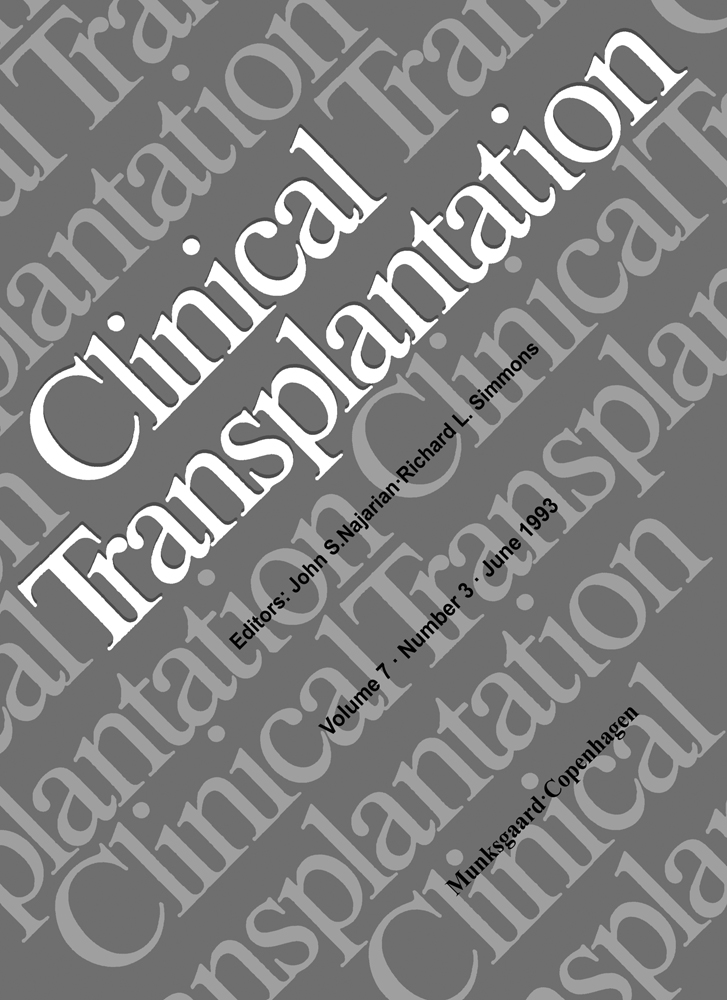Ten-year experience in the use of double balloon catheter for kidney procurement from non-heart beating donors in cadaveric kidney transplantation
Abstract
One-hundred-and-twenty patients underwent first cadaveric kidney transplantation from the non-heart beating donors. All of the organs were procured with the use of double balloon catheter for in situ cooling. The mean warm ischemic time and cold ischemic time were 10.7± 17.0 minutes and 18.9 ± 11.4 hours, respectively. One- and 5-year graft survival rates were 85.0 and 72.7%, respectively. Among 120 recipients, 30 (25%) grafts functioned immediately (immediate function), 82 (68.3%) grafts functioned after varying length of oliguric periods (delayed function) and 8 (6.7%) grafts never functioned (non–function). The mean age of the donors in the group of immediate function (31.5±16.1 yr) was significantly lower than those of other two groups. The mean warm ischemic time in the group of immediate function (6.0± 11.2 min) was significantly shorter than that of delayed function. However, there was no significant difference in donor hypotensive episode, types of preservation fluid and cold ischemic time between the groups. The conclusion is that the ultimate result of cadaveric kidney transplant from the non-heart beating donors with the use of double lumen catheter is acceptable despite a relatively high incidence of delayed graft function.




